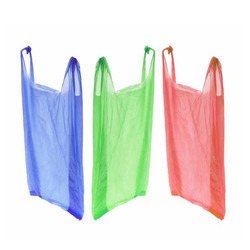Polythene is also known as polyethylene, and generally it is abbreviated as PE, is the most commonly used plastic in this era. It has low strength, hardness, and rigidity but it has high impact strength, high ductility, and low friction. Under the persistent force, it shows the strong creep that can be possibly reduced by the addition of the short fibers. On touch, it has a waxy feel. It consists of saturated, non-polar and the hydrocarbons of the high molecular weight. Its chemical behavior is similar to that of Paraffin. In the polythene, the individual molecules are not covalently linked. They have a symmetric molecular structure, so they tend to crystallize, and overall polythene partially crystalline. Due to higher crystallinity density is increased and mechanical and chemical stability is increased. It does not absorb the water. The water vapor and gas permeability are lower than the other plastics. However, carbon dioxide, oxygen, and flavorings can easily pass through it. When exposed to sunlight, it can become brittle, so usually, carbon black is used as a UV stabilizer. Polythene has high resistance to the solvents as it is nonpolar in nature. It is a better electrical insulator, and good electrical treeing resistance is offered by it, however, it is easily charged electrostatically.
Classification of Polythene
Polythene is classified by its branching and density and its mechanical properties are significantly dependent on the type and extent of branching, molecular weight, and the crystal nature. There are various types of polythene such as ultra-high molecular weight polythene, ultra-low molecular weight polythene, high molecular weight polythene, high-density polythene, high-density cross-linked polythene, medium density polythene, cross-linked polythene, low-density polythene, linear low-density polythene, chlorinated polythene, and very-low-density polythene.


The polythene which is used for commercial applications has low melting points. Depending on the film thickness, and thermal history, polythene can greatly vary between the transparent to milky opaque or translucent. It is produced from the ethylene and it is not readily biodegradable and as a result, it is accumulated in the landfills. Many species of bacteria and animals are able to biodegrade the polythene and the problem of environmental pollution can be significantly reduced. Mainly, the polythene is obtained from natural gas or petroleum and its widespread use is creating difficulties for waste management. Its recycling is greatly helpful to reduce its environmental concerns and a recycling code is used on the recycled polythene bags.